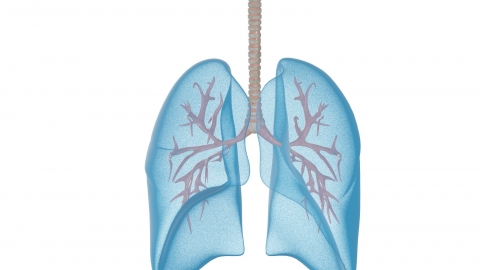What are the symptoms of white lung disease?
White lung disease typically refers to an imaging manifestation of severe pneumonia, indicating widespread inflammation or consolidation in the lungs. Generally, symptoms of white lung disease may include difficulty breathing, persistent high fever, cough with purulent sputum, chest pain, and general fatigue. Patients experiencing these symptoms should seek timely medical attention and undergo treatment under a doctor's guidance. A detailed explanation is as follows:
White lung disease causes extensive lung tissue damage, affecting the lungs' ventilation and gas exchange functions. Oxygen cannot enter the bloodstream normally, and the resulting oxygen deficiency increases breathing rate. Patients often feel short of breath, especially during physical activity, and in severe cases, breathing difficulties may occur even at rest.

2. Persistent High Fever
Lung infection triggers an inflammatory response, stimulating the body's immune system and causing dysfunction of the body's temperature regulation center. This results in persistent high fever, often exceeding 38.5°C. Ordinary antipyretics may have limited effectiveness, and the fever may last for an extended period.
3. Cough with Purulent Sputum
Pulmonary inflammation stimulates excessive secretion from the respiratory mucosa, producing purulent sputum. Inflammation also irritates the respiratory mucosa, triggering cough reflexes. Patients often experience frequent coughing, producing yellow or green pus-like sputum, and some may have blood-tinged sputum.
4. Chest Pain
When lung lesions involve the pleura, pleuritis occurs, causing chest pain. The pain is usually sharp or dull and intensifies during coughing, deep breathing, or changing body positions, significantly affecting normal breathing and daily activities.
5. General Fatigue
Lung damage leads to systemic oxygen deficiency, and persistent fever and coughing consume significant physical energy, resulting in insufficient energy supply. Patients may feel generally weak, experience limb soreness, mental fatigue, and even be unable to perform simple daily tasks.
In addition, some patients may also experience confusion, palpitations, and other symptoms. If any of the above symptoms appear, immediate medical evaluation and treatment are necessary to prevent worsening of the condition. Daily management should include adequate rest, avoiding physical strain, maintaining proper nutrition and hydration, and taking personal protective measures to prevent cross-infection.





